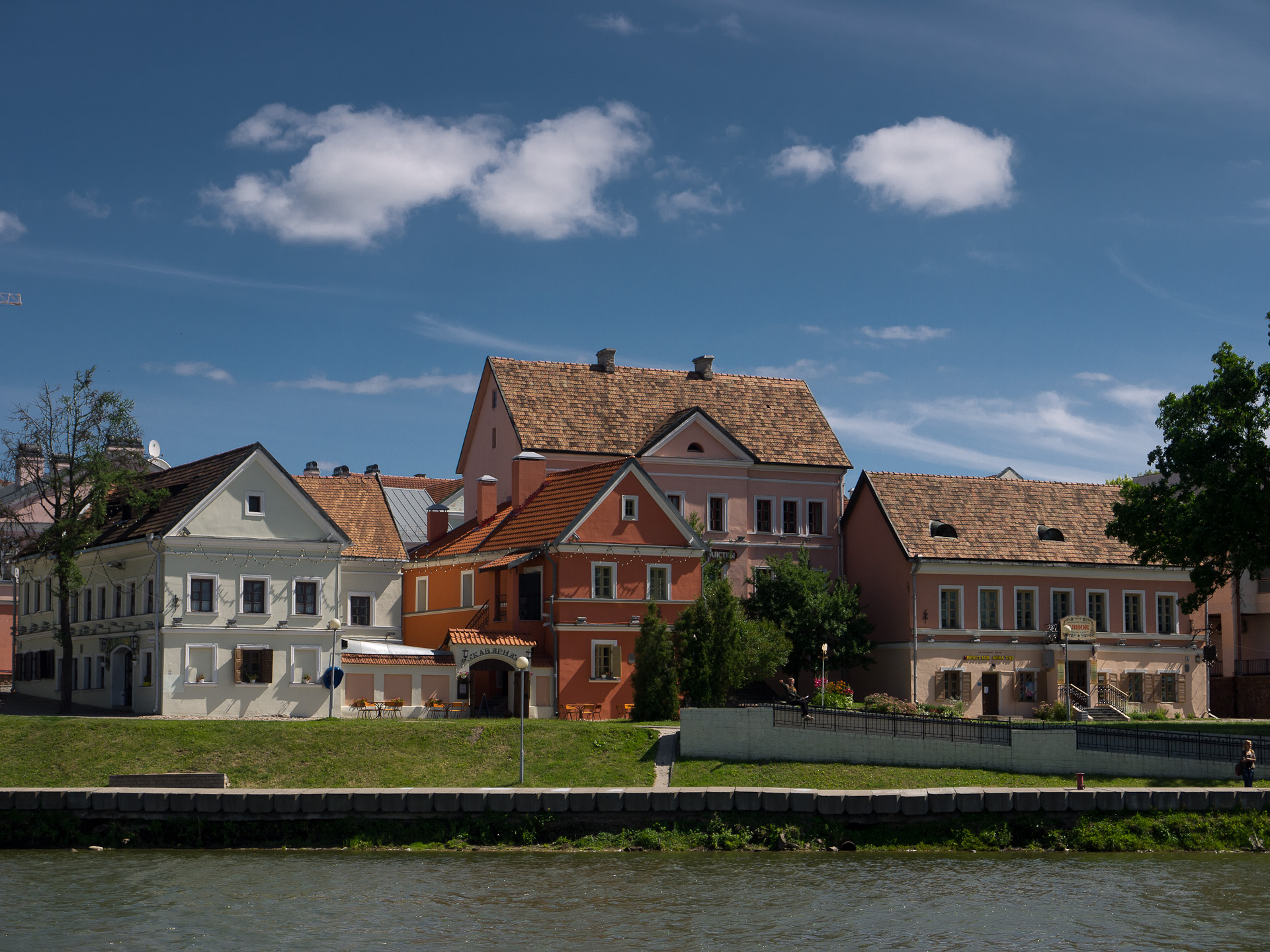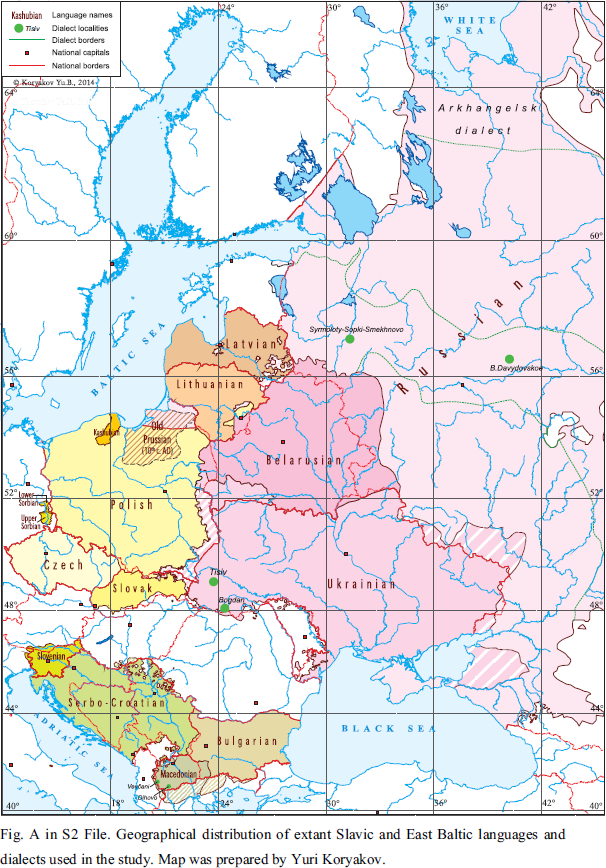|
Andrei Sannikov
Andrei Olegovich Sannikov (or Andrei Sannikau, be, –ź–Ĺ–ī—Ä—ć–Ļ –ź–Ľ–Ķ–≥–į–≤—Ė—á –°–į–Ĺ–Ĺ—Ė–ļ–į—ě, russian: –ź–Ĺ–ī—Ä–Ķ–Ļ –ě–Ľ–Ķ–≥–ĺ–≤–ł—á –°–į–Ĺ–Ĺ–ł–ļ–ĺ–≤, born 8 March 1954) is a Belarusian politician and activist. In the early 1990s, he headed the Belarusian delegation on Nuclear and Conventional Weapons Armament Negotiations, also serving as the Belarusian diplomat to Switzerland. From 1995 to 1996, he served as Deputy Foreign Minister of Belarus, resigning as a form of political protest. He co-founded the civil action Charter 97, and was awarded the Bruno Kreisky Prize in 2005. Sannikov was a candidate at the 2010 presidential election in Belarus, and had the second highest percentage of the popular votes after incumbent Alexander Lukashenko. He was incarcerated in a Minsk KGB facility for peacefully protesting at a demonstration after the elections. Sannikov was beaten by police, tortured, and held incommunicado for two months. Amnesty International labeled him a pri ... [...More Info...] [...Related Items...] OR: [Wikipedia] [Google] [Baidu] |
Minsk
Minsk ( be, –ú—Ė–Ĺ—Ā–ļ ; russian: –ú–ł–Ĺ—Ā–ļ) is the capital and the largest city of Belarus, located on the Svislach (Berezina), Svislach and the now subterranean Nyamiha, Niamiha rivers. As the capital, Minsk has a special administrative status in Belarus and is the administrative centre of Minsk Region (oblast, voblast) and Minsk District (Raion, raion). As of January 2021, its population was 2 million, making Minsk the Largest cities in Europe, 11th most populous city in Europe. Minsk is one of the administrative capitals of the Commonwealth of Independent States (CIS) and the Eurasian Economic Union (EAEU). First documented in 1067, Minsk became the capital of the Principality of Minsk before being annexed by the Grand Duchy of Lithuania in 1242. It received town privileges in 1499. From 1569, it was the capital of the Minsk Voivodeship, an administrative division of the Polish‚ÄďLithuanian Commonwealth. It was part of a region annexed by the Russian Empire in 1793, as a c ... [...More Info...] [...Related Items...] OR: [Wikipedia] [Google] [Baidu] |
Soviet Republics
The Republics of the Union of Soviet Socialist Republics or the Union Republics ( rus, –°–ĺ—éŐĀ–∑–Ĺ—č–Ķ –†–Ķ—Ā–Ņ—ÉŐĀ–Ī–Ľ–ł–ļ–ł, r=Soy√ļznye Resp√ļbliki) were national-based administrative units of the Union of Soviet Socialist Republics (USSR). The Soviet Union was formed in 1922 by a treaty between the Soviet republics of Byelorussia, Russia, Transcaucasia, and Ukraine, by which they became its constituent republics. For most of its history, the USSR was a highly centralized state despite its nominal structure as a federation of republics; the decentralization reforms during the era of '' perestroika'' and ''glasnost'' conducted by Mikhail Gorbachev are cited as one of the factors which led to the dissolution of the USSR in 1991 and the creation of the Commonwealth of Independent States. There were two very distinct types of republics in the Soviet Union: the larger union republics, representing the main ethnic groups of the Union and with the constitutional right to ... [...More Info...] [...Related Items...] OR: [Wikipedia] [Google] [Baidu] |
Diplomatic Academy Of The Ministry Of Foreign Affairs Of The Russian Federation
The Diplomatic Academy of the Ministry of Foreign Affairs of the Russian Federation is among the oldest diplomatic institutes in the world, which trains specialists in the field of international relations, international economic relations and international law. The Diplomatic Academy is an educational institution founded by the Ministry of Foreign Affairs of the Russian Federation. Besides the higher professional education programs, the Diplomatic Academy implements additional education programs. The main ones are the programs of retraining and advanced training of diplomatic workers in Russia and foreign countries. History The Diplomatic Academy was founded in 1934. The Institute began to work in the building of the former rental house of the First Russian Insurance Society, which the PCFA (since 1946 - MFA) occupied from 1918 to 1952. In 1974, by the decision of the USSR Council of Ministers, the Higher Diplomatic School was transformed into the Diplomatic Academy of the ... [...More Info...] [...Related Items...] OR: [Wikipedia] [Google] [Baidu] |
New York City
New York, often called New York City or NYC, is the most populous city in the United States. With a 2020 population of 8,804,190 distributed over , New York City is also the most densely populated major city in the United States, and is more than twice as populous as second-place Los Angeles. New York City lies at the southern tip of New York State, and constitutes the geographical and demographic center of both the Northeast megalopolis and the New York metropolitan area, the largest metropolitan area in the world by urban landmass. With over 20.1 million people in its metropolitan statistical area and 23.5 million in its combined statistical area as of 2020, New York is one of the world's most populous megacities, and over 58 million people live within of the city. New York City is a global cultural, financial, entertainment, and media center with a significant influence on commerce, health care and life sciences, research, technology, educa ... [...More Info...] [...Related Items...] OR: [Wikipedia] [Google] [Baidu] |
United Nations Secretariat
The United Nations Secretariat (french: link=no, Secrétariat des Nations unies) is one of the six principal organs of the United Nations (UN), The secretariat is the UN's executive arm. The secretariat has an important role in setting the agenda for the deliberative and decision-making bodies of the UN (i.e., the General Assembly, Economic and Social Council, and Security Council), and the implementation of the decision of these bodies. The secretary-general, who is appointed by the General Assembly, is the head of the secretariat. The mandate of the secretariat is a wide one. Dag Hammarskjöld, the UN's second secretary-general, described its power as follows: "The United Nations is what member nations made it, but within the limits set by government action and government cooperation, much depends on what the secretariat makes it. It has creative capacity. It can introduce new ideas. It can, in proper forms, take initiatives. It can put before member governments findings w ... [...More Info...] [...Related Items...] OR: [Wikipedia] [Google] [Baidu] |
Union Of Soviet Societies For Friendship And Cultural Relations With Foreign Countries
VOKS (an acronym for the Russian ''Vsesoiuznoe Obshchestvo Kul'turnoi Sviazi s zagranitsei'' ‚ÄĒ –í—Ā–Ķ—Ā–ĺ—é–∑–Ĺ–ĺ–Ķ –ĺ–Ī—Č–Ķ—Ā—ā–≤–ĺ –ļ—É–Ľ—Ć—ā—É—Ä–Ĺ–ĺ–Ļ —Ā–≤—Ź–∑–ł —Ā –∑–į–≥—Ä–į–Ĺ–ł—Ü–Ķ–Ļ, All-Union Society for Cultural Relations with Foreign Countries), or the Society of Cultural Relations with the Soviet Union, was an entity created by the government of the Soviet Union (USSR) in 1925 to promote international cultural contact between writers, composers, musicians, cinematographers, artists, scientists, educators, and athletes of the USSR with those of other countries. The organization conducted tours and conferences of such cultural workers. Although of Soviet origin, VOKS was in fact an international organization, with parallel national branches around the world, such as the American Society for Cultural Relations with Russia (established 1926) and the Society for Polish-Soviet Friendship (established 1944). VOKS was frequently criticized by Western government officials, publi ... [...More Info...] [...Related Items...] OR: [Wikipedia] [Google] [Baidu] |
Egypt
Egypt ( ar, ŔÖōĶōĪ , ), officially the Arab Republic of Egypt, is a transcontinental country spanning the northeast corner of Africa and southwest corner of Asia via a land bridge formed by the Sinai Peninsula. It is bordered by the Mediterranean Sea to the north, the Gaza Strip of Palestine and Israel to the northeast, the Red Sea to the east, Sudan to the south, and Libya to the west. The Gulf of Aqaba in the northeast separates Egypt from Jordan and Saudi Arabia. Cairo is the capital and largest city of Egypt, while Alexandria, the second-largest city, is an important industrial and tourist hub at the Mediterranean coast. At approximately 100 million inhabitants, Egypt is the 14th-most populated country in the world. Egypt has one of the longest histories of any country, tracing its heritage along the Nile Delta back to the 6th‚Äď4th millennia BCE. Considered a cradle of civilisation, Ancient Egypt saw some of the earliest developments of writing, agr ... [...More Info...] [...Related Items...] OR: [Wikipedia] [Google] [Baidu] |
Pakistan
Pakistan ( ur, ), officially the Islamic Republic of Pakistan ( ur, , label=none), is a country in South Asia. It is the world's List of countries and dependencies by population, fifth-most populous country, with a population of almost 243 million people, and has the world's Islam by country#Countries, second-largest Muslim population just behind Indonesia. Pakistan is the List of countries and dependencies by area, 33rd-largest country in the world by area and 2nd largest in South Asia, spanning . It has a coastline along the Arabian Sea and Gulf of Oman in the south, and is bordered by India to India‚ÄďPakistan border, the east, Afghanistan to Durand Line, the west, Iran to Iran‚ÄďPakistan border, the southwest, and China to China‚ÄďPakistan border, the northeast. It is separated narrowly from Tajikistan by Afghanistan's Wakhan Corridor in the north, and also shares a maritime border with Oman. Islamabad is the nation's capital, while Karachi is its largest city and fina ... [...More Info...] [...Related Items...] OR: [Wikipedia] [Google] [Baidu] |
Belarusian Language
Belarusian ( be, –Ī–Ķ–Ľ–į—Ä—É—Ā–ļ–į—Ź –ľ–ĺ–≤–į, bieŇāaruskaja mova, link=no, ) is an East Slavic language. It is the native language of many Belarusians and one of the two official state languages in Belarus. Additionally, it is spoken in some parts of Russia, Lithuania, Latvia, Poland, and Ukraine by Belarusian minorities in those countries. Before Belarus gained independence in 1991, the language was only known in English as ''Byelorussian'' or ''Belorussian'', the compound term retaining the English-language name for the Russian language in its second part, or alternatively as ''White Russian''. Following independence, it became known as ''Belarusan'' and since 1995 as ''Belarusian'' in English. As one of the East Slavic languages, Belarusian shares many grammatical and lexical features with other members of the group. To some extent, Russian, Rusyn, Ukrainian, and Belarusian retain a degree of mutual intelligibility. Its predecessor stage is known in Western aca ... [...More Info...] [...Related Items...] OR: [Wikipedia] [Google] [Baidu] |
Minsk State Linguistic University
Minsk State Linguistic University (MSLU; '', –ú–Ē–õ–£'') is a public university in Minsk, Belarus. It specializes in language education and offers courses in 18 foreign languages including English, German, French, Spanish, etc., as well as training teachers of Russian and Belarusian as foreign languages. It was founded in 1948 as Minsk State Pedagogical Institute for Foreign Languages and today is considered the flagship university in Belarus for language education and translator training. In addition to degree programs and continuous education courses aimed at local students, MSLU also offers both short courses and degree programs for foreign nationals, mainly focusing on the Russian language. The university maintains ties with institutions abroad, including exchange programs for students and faculty. Majors MSLU offers seven academic majors: general linguistics, interpreting and translation, foreign language teaching, communication services, public relations, international (p ... [...More Info...] [...Related Items...] OR: [Wikipedia] [Google] [Baidu] |
Ivan Kupala National Academic Theatre
Ivan () is a Slavic male given name, connected with the variant of the Greek name (English: John) from Hebrew meaning 'God is gracious'. It is associated worldwide with Slavic countries. The earliest person known to bear the name was Bulgarian tsar Ivan Vladislav. It is very popular in Russia, Ukraine, Croatia, Serbia, Bosnia and Herzegovina, Slovenia, Bulgaria, Belarus, North Macedonia, and Montenegro and has also become more popular in Romance-speaking countries since the 20th century. Etymology Ivan is the common Slavic Latin spelling, while Cyrillic spelling is two-fold: in Bulgarian, Russian, Macedonian, Serbian and Montenegrin it is –ė–≤–į–Ĺ, while in Belarusian and Ukrainian it is –Ü–≤–į–Ĺ. The Old Church Slavonic (or Old Cyrillic) spelling is . It is the Slavic relative of the Latin name , corresponding to English ''John''. This Slavic version of the name originates from New Testament Greek (''IŇć√°nnńďs'') rather than from the Latin . The Greek name is in ... [...More Info...] [...Related Items...] OR: [Wikipedia] [Google] [Baidu] |





